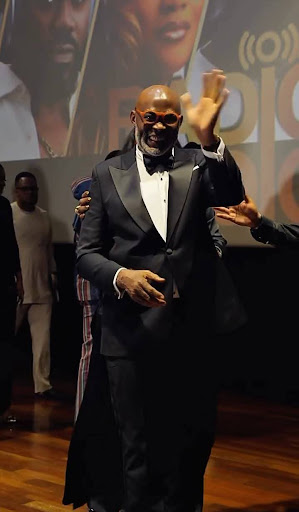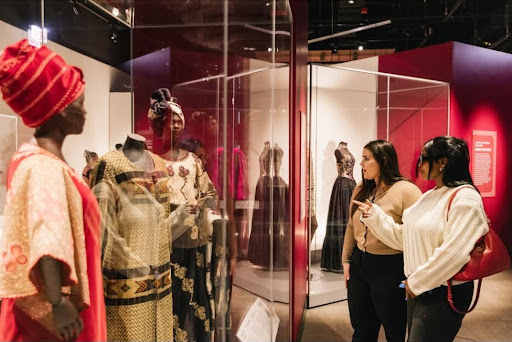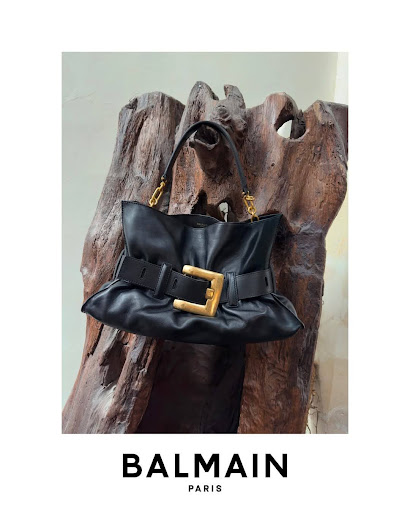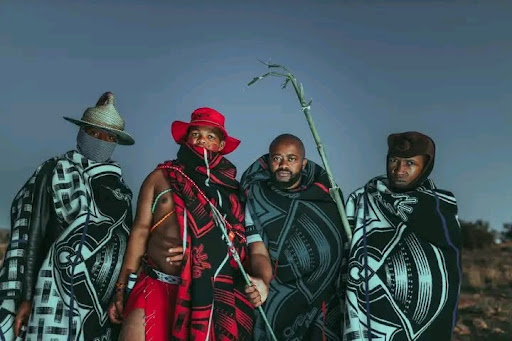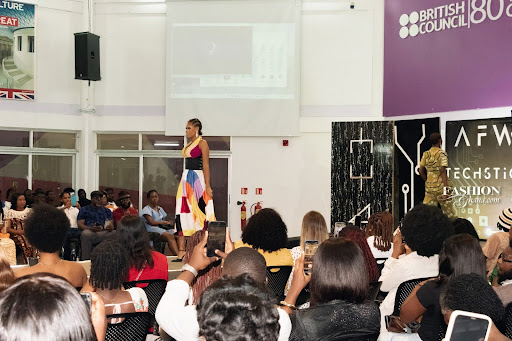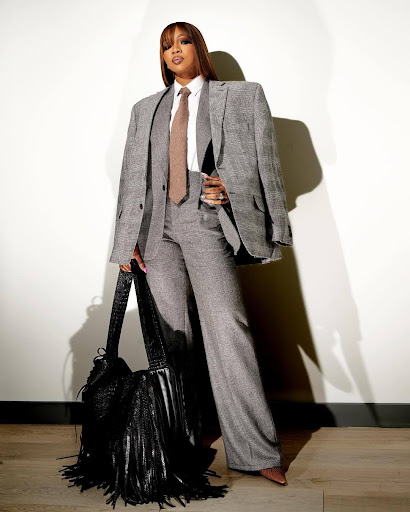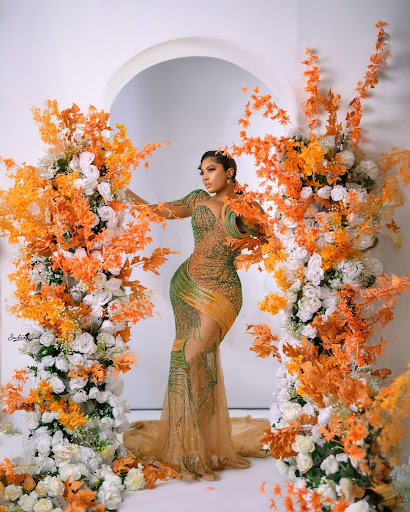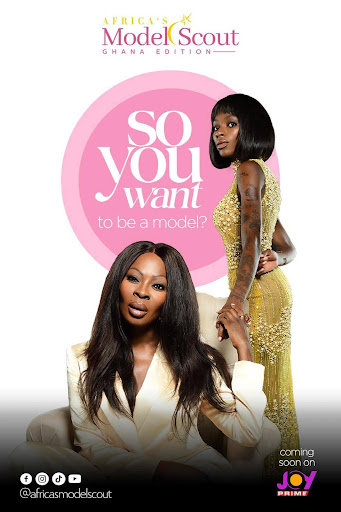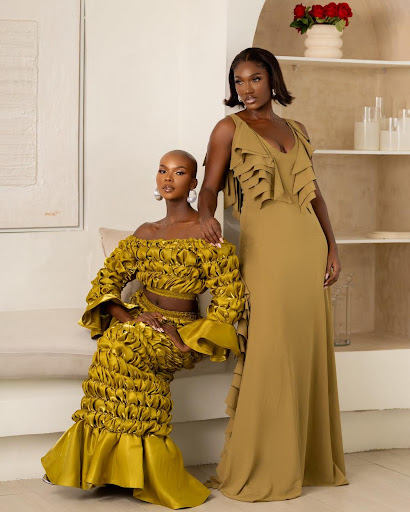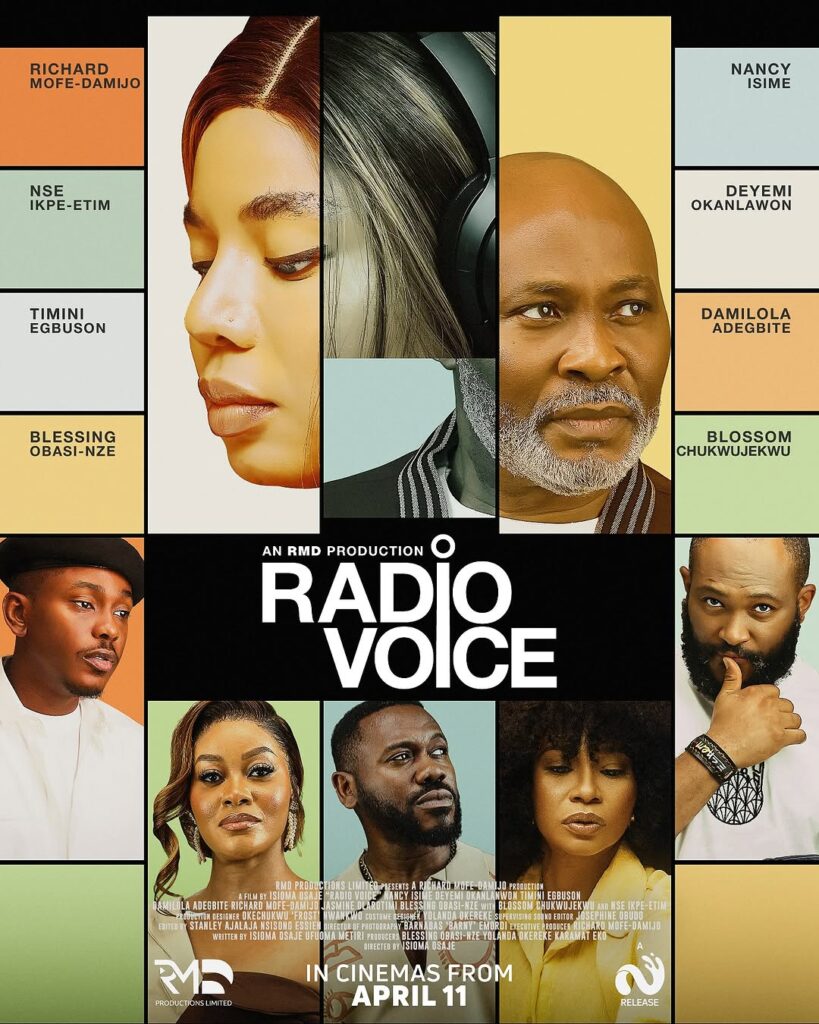
The premiere of Richard Mofe-Damijo’s latest film, Radio Voice, made a normal night out a glamorous celebration of Nigerian cinema. The evening, hosted in The Library, Lagos, was a lesson in classic glamour and refined taste, bringing Nollywood’s movers and shakers and cultural bigwigs together. Celebrities such as Iyabo Ojo, RMD himself, Ariyiike Dimples, Nancy Isime, Deyemi Okanlawon, and many others ignited the red carpet, ushering in a night of timeless elegance that celebrated the artistry of cinema and the revolution of fashion in the arts.
A Night of Timeless Elegance
From the doorstep of visitors from the start, it was obvious that the opening night was a cinematic debut—the celebration of a heritage and taste. The red carpet, a typical exhibition of over-the-hill fashions, came in a toned-down, less flamboyant incarnation to Radio Voice. Visitors dressed for the occasion to balance the hip chic of now with a nod to retro-tastic glamour. The evening’s theme called for adult sophistication, and all aspects, from the streamlined silhouette of the tailor-made suits to the sophisticated forms of evening wear, were attuned to this mature sensibility.
RMD, the man behind the film and one of Nollywood’s most iconic stars, was in quiet confidence mode in a sharp black suit and bow tie. His was the epitome of understated charm, an evening’s setting for a night where every ensemble was carefully constructed to reflect legacy and individuality. This ambiance was continued through the night, as guests assumed a feel that was both polished and authentic.
Celebrity Spotlight and Signature Looks
Among the notable guests was the legendary Iyabo Ojo, whose Nollywood career has endured for decades. Iyabo’s attendance at the premiere was a tribute to her enduring presence in the industry. She was gorgeous in a beautifully tailored dress that combined timeless beauty with contemporary style. From the exquisite fabric to the tasteful embellishments, everything in her outfit made her one of Nollywood’s most consistent style icons.
Ariyiike Dimples, who was beloved for her boisterous energy and warm-heartedness, wore a look that was simultaneously playful and fashion-forward. Her look was a reimagined take on old-school glamour punctuated by loud accessories and a dress that walked the line between tradition and trend. Dimples’ style was an inspiration not only to her fans but also to her peers in the industry because it demonstrated that fashion is really all about being capable of innovating while staying close to one’s roots.
Another standout was media personality Nancy Isime, whose bright smile and confident strut lit up the red carpet. Isime’s outfit was the definition of high fashion and street style blended into one. Her elegant appearance encapsulated the whole vibe of the event’s theme of simplicity with a touch of sumptuousness, mirroring the restrained excitement that ran through the premiere.
Deyemi Okanlawon and a few other rising stars also attended, adding to the vibrant energy of the occasion. Their youthful and cosmopolitan style hinted that there is a rosy future for Nollywood, where traditional storytelling and modern influences merge in perfect harmony on the cinema screen.
The Atmosphere and Industry Impact
Radio Voice is not just another entry in Nollywood’s extensive filmography—it is a film that represents a personal journey for RMD and one that addresses the evolution of Nigerian storytelling. The premiere itself was a reflection of the film’s themes of redemption, rebirth, and the enduring power of love. The air was filled with a blend of movie magic and cultural pride, a place where conversations about art, heritage, and identity came easily between the celebrities and the industry individuals. Other Celebrities were also present such as Kie Kie, Rita Dominic, Akin Faminu, Toyin Abraham, Enioluwa, Stan Nze.
Guests have characterized the mood as poised and contemplative, each one helping to create an overall sense of serenity but purposeful celebration. Rather than the frenetic, over-the-top excitement that tends to be associated with such premieres, this experience was defined by its emphasis on grace and understated elegance. It was a reminder that sometimes the most compelling statements are delivered through understated styling and authentic presence.
The glamour on display was vintage glamour by design—a conscious nod to Nollywood heritage—an industry that has repeatedly rebranded itself without sacrificing the credibility of its cultural storytelling. With the rendezvous of movie enthusiast and industry players present, it became clear that Radio Voice has positioned itself to resonate with viewers both for its narrative ability and for the visual nod to Nigerian heritage.
Looking Ahead
The evening of the Radio Voice debut was one of celebration of former triumph and yet-to-be achievement. In this film, RMD not only ventures into fresh creative territory by venturing beyond the camera as a producer but also pays homage to the stories and sensibilities that have dominated Nigerian film over the past few decades. The evening reminded all that class and authenticity are timeless values in an industry in flux.
As the credits roll on this evening to remember, one thing is sure: the poised sophistication and elegant glamour flashed at the premiere are only an appetizer for what Radio Voice has in store—a movie teeming with emotion, depth of story, and celebration of Nollywood’s indefatigable spirit. Embracing both an appearance that’s refined but idiosyncratic, the premiere set a bar that future events could now emulate, bearing witness that, as far as the art of entertainment is concerned, real glamour is a style du jour.
The film Radio Voice, will be in cinemas by April 11, 2025. Watch trailer here

